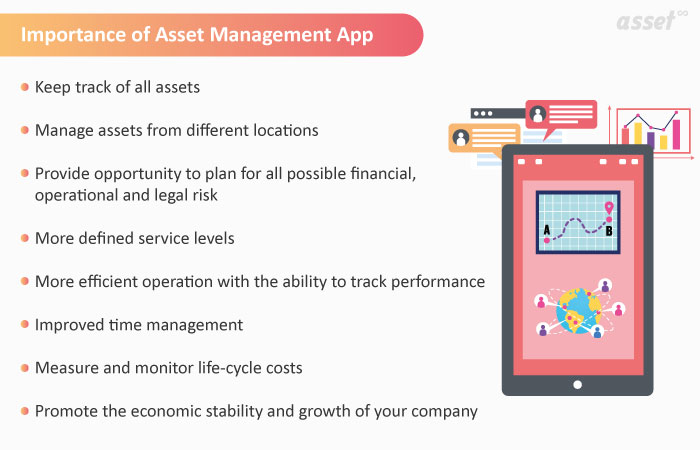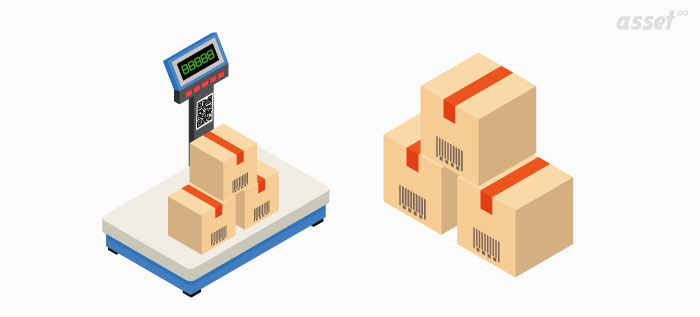Almost all the businesses running in the world acquire some or less assets and inventory to operate with. They all need to keep a regular check on their revenues and profits. Installation of asset management app in the system configures all the information at one place to keep an easy track over all the business assets and revenue generated.
The development of technology and software to manage assets has changed a lot of working habits and schedules which were time-consuming such as working on spreadsheets.
The rise in technology has eliminated spreadsheets with a bonus to the advantage of asset management system. Earlier it was a good idea to download and work on spreadsheet templates to manage and track assets but in the long run, when the business grows along with its business assets, spreadsheets are likely to errors.
Moreover, as compared to today's technology it was lacking in features such as:
- To track assets in real-time (nobody has the real-time record for their assets)
- It wasn't cloud-based (restricted to a single person's desktop system, no leverage to operate from any other location)
- Not beneficial for long run (more vulnerable to errors)
Also Read: What Is Asset Management and What Are Its Types and Benefits?
Whilst, it is important to keep a track on business assets it's also important for organizations to save their money as well as time.
About Asset Management App
The asset management app helps to maximize the returns on assets for an organization. From tracking and managing assets, the asset management app also involves in assets' recovery.
According to Wikipedia, asset management is a systematic approach to control and manage the value from the asset involved in business operations for their whole life-cycle.
These assets can be tangible, intangible, liquid, or fixed. It is important for an organization to manage its assets and utilize them to receive maximum returns possible.
Why Asset Management App is Important?
Reasons why asset management app is important are:

- The asset management app allows the organization to keep track of all their business assets. It provides the information such as where the assets are, what is their location, how they are used, who are they assigned to, for what purpose they are being used or in which department they are being used and what are the changes made to them. All this information extract from the asset management system ensures the asset recovery leading to better ROI.
- The asset management software manages all the assets from various locations in an accurate and effective manner. The asset management app allows the organization to create the reports whenever required.
- The app assures the accuracy of amortization rates of assets. Regular checks of the assets ensure the accuracy of the financial statements of the business.
- Asset management app automatically reflects all the information regarding asset maintenance and recovery with detailed information on what asset has been sold or discarded, stock updates of consumables and spare parts, all is recorded and written in the business books.
- Asset Life cycle management through asset management can also save you extended costs on maintenance (costs utilized to cover maintenance problems). As maintenance costs count a huge amount in business expenses and overdoing of tasks increases this cost, also underdone maintenance can also cause reduced productivity. So, scheduling the tasks in a balanced manner is necessary.
- The asset management system enables efficient operations in an organization with respect to understanding asset capabilities and their operational efficiency.
- The system enables you to create a risk management plan which includes the risk involved with the use and ownership of assets. Proper management helps to timely identify the risk and solution to avoid it.
- Assistance in optimizing operations involved with the planning of strategies, use of resources, and implementation of the management program.
- Ghost assets (assets that are not physically present but mentioned in records or assets that are inaccurately recorded) are also removed from the inventory.
- The use of an asset management app reduces the chances of theft and steal, more accurate asset recovery, and its accounting to maximize the return.
Also Read: 5 Crucial Benefits of Asset Management for the Manufacturing Sector
Asset Tagging Solutions

Asset tags are the first part of an asset management system to be taken care of. Asset tags or barcodes are printed and supplied as a flexible solution for asset labeling as required by the customer. Then all the assets' information is transferred to these asset labels as they improve your facility maintenance, inventory management, asset tracking, etc. asset tag helps you to achieve correct information at the correct time.
Conclusion
Asset management app through its features delivers amazing outcomes for your business, such as:
1. Improve Acquisition and Use:
Asset management system helps to track the asset for its whole life-cycle to improve what your business acquires and how it is used.
Before implementing asset management your hardware and their costs were out of control but now after finding the correct solution you were able to find unnecessary practices and a strategy to purchase equipment as required.
2. Improve Compliance
All of the organizations require a detailed report on their acquisitions, use of assets, their maintenance reports, and disposal of assets, especially government agencies, non-profit organizations, etc. so, through asset management app you will receive a central database with that reporting is more comprehensive and error-free, yet the software being easy and simple to use.
3. Improve Asset Reliability
Asset tracking improves reliability by monitoring assets and their regular maintenance, analyzing their costs, etc. through asset tracking app you are able to:
- Identify trends and create plans and strategies to balance assets costs and availability.
- Quick identification and resolve of queries before they take a major shape.
- Identification of important parts which are needed to run large systems.
Also Read: 5 Reasons Why You Need to Invest in Asset Tracking Software
Frequently Asked Questions (FAQs)
1. What is asset management?
The asset management process is a financial service done to manage assets to increase return on investment. The process is implemented to manage and boost business wealth.
2. What are the types of asset management?
Types of Asset Management are below:
1. Financial Asset Management
2. Enterprise Asset Management
3. Infrastructure Asset Management
4. Public Asset Management
5. IT Asset Management
6. Fixed Assets Management
7. Digital Asset Management
3. Why is asset management important?
Asset management is important as it helps to monitor and manage assets using a systematized approach. Effective management of assets includes improvements in the productivity and efficiency of a business to increase the return on investment.
4. What is asset life-cycle management?
Asset Lifecycle Management is the process of optimizing the assets throughout their lifecycle. Comprehensive asset management, strategically project execution, through efficient asset management practice to deliver desired outcomes.

















































.webp)
.webp)
.webp)
.webp)
.webp)
.webp)
.webp)
.webp)
.webp)

.svg)




.webp)
.webp)











































.png)




.webp)



















